September Blooms
As summer comes to an end, September blooms emerge and fall foliage begins to take over the New England scenery. As you explore the Garden at the start of the new season, keep a look out for some of these early autumn favorites.
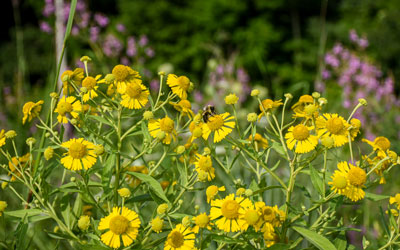
Sneezeweed (Helenium autumnale)
Contrary to its name, sneezeweed is not the plant that causes allergies each fall. The native plant can be found along rivers and streams, in wet meadows, and at pond and lake shorelines. Flowers of sneezeweed feature globe-shaped, yellow discs that grow at the center of multiple yellow petals. The long-lasting blooms appear in late summer and can linger until the first frost.
Location(s): Meadows and Garden of Inspiration
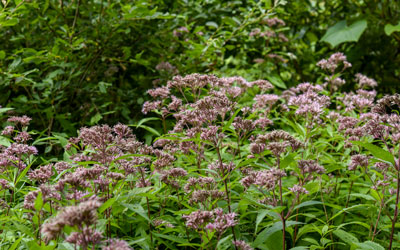
Joe-Pye weed (Eutrochium spp.)
Joe-Pye weed is a perennial that can grow as tall as six feet in the right conditions. Four species of this plant that are native to New England. Flowers range from a reddish pink to a light pink color, often blooming in clusters. Joe-Pye weed is great pollinator plants, drawing in an assortment of butterflies and bees.
Location(s): Throughout the Garden, primarily in the Secret Garden, Lawn Garden, and meadows

Zulu giant or carrion plant (Stapelia gigantea)
This South African plant, a spine-free succulent, exhibits massive yellow flowers shaped like bulky starfish. Each odd-looking bloom on the Zulu giant is covered with red, bristly hairs. A carrion plant, the flowers smell of rotting flesh to attract its preferred pollinator—flies. The Zulu giant blooms from late summer to early fall.
Location(s): Orangerie (during colder months) and Garden of Inspiration terrace (during warmer months)
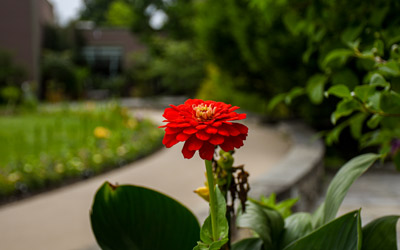
Zinnia (Zinnia spp.)
There are 17 species of annual, perennial, and low shrubs in the Zinnia genus. The plants are native to the southwestern United States as well as Mexico, Central America, and South America. Zinnias have been cultivated for their colorful, daisy-like flowers that often bloom throughout the summer and into late fall. Their flowers range in color and can include bright shades of red, pink, orange, yellow, and white.
Location(s): Secret and Climate Gardens
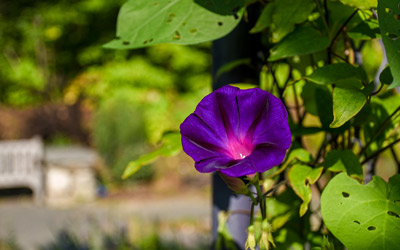
Common morning glory (Ipomoea purpurea)
These popular vining plants are native to Mexico and Central America. Often grown as an ornamental, they can reach a height of ten feet. Opening in the morning and closing at night, the flowers — funnel or trumpet-shaped — are varying shades of purple, pink, burgundy, or white.
Location(s): Garden of Inspiration
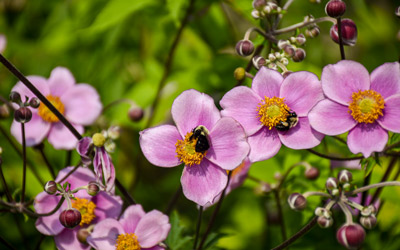
Windflower (Anemone × hydrida)
A visitor favorite, windflowers come in many varieties. ‘Robustissima,’ is nearly white on the outer margins of the petals becoming deep pink toward the centers. A perennial, this windflower grows up to four feet tall and is considered one of the hardiest anemones as it tolerates Zones 3-9. It appreciates full to partial sun and moist, well-drained soil.
Location(s): Cottage Garden
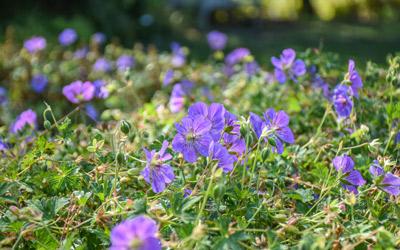
Cranesbill (Geranium spp. and cultivars)
A genus of more than 300 species, Geranium are native to temperate regions, mostly in subtropical southern Africa. These plants are popular and make great additions to a garden. The cranesbill found at the Garden blooms throughout the summer and into late fall. The flowers are low to the ground and offer various shades of purple.
Location(s): Lawn, Entry, and Cottage Gardens, and Garden of Inspiration
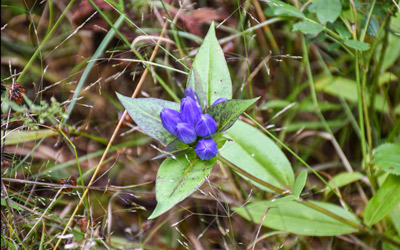
Bottle gentian (Gentiana clausa)
Resembling small bottles, the flowers of a bottle gentian do not fully open. Instead, pollinators like bees and other insects must force their way into the flower to retrieve the pollen. A royal blue color, these flowers are native to most of the northeastern United States and can often be found in wet meadow areas and woodland edges.
Location(s): Wildlife Refuge Pond
